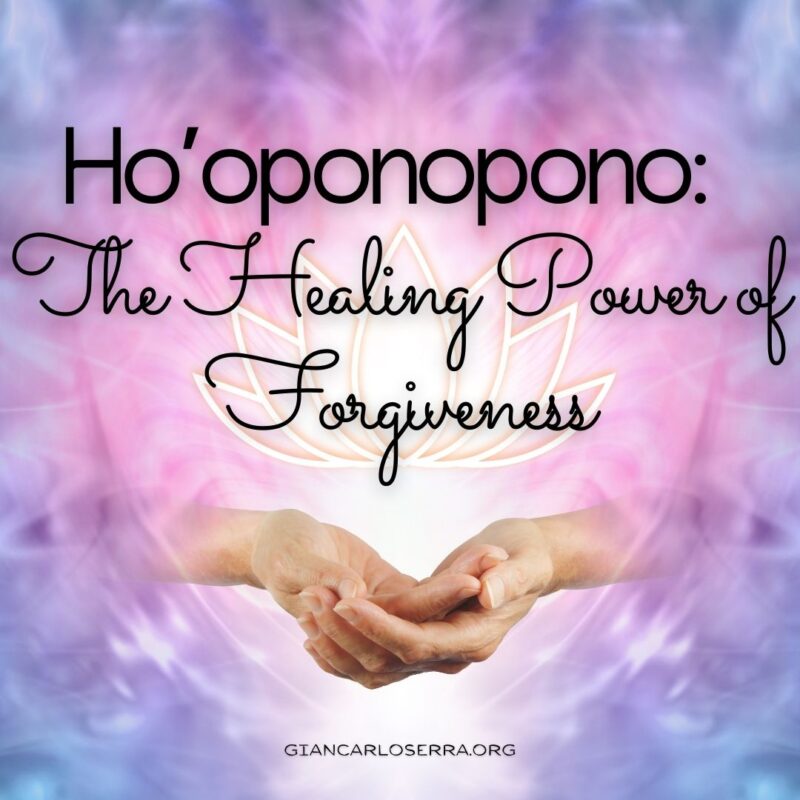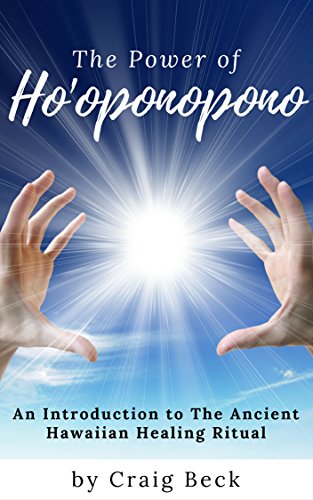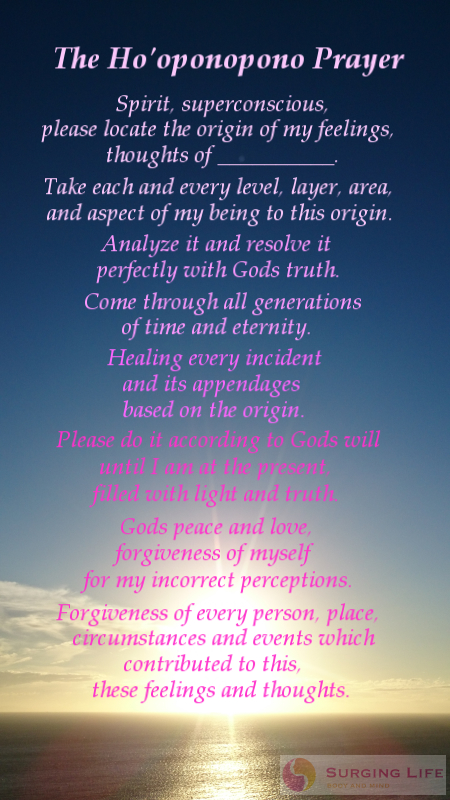Hey, have you ever heard of Ho’oponopono? It’s a fascinating practice that can help bring healing and resolution to various aspects of your life. Whether you’re struggling with emotional trauma, relationship issues, or simply the need to find peace within yourself, Ho’oponopono can offer some powerful guidance. In this article, we’ll take a closer look at the ancient Hawaiian practice, explore its core principles, and learn how it can help you heal and reconnect with your inner child.
When it comes to healing through Ho’oponopono, it’s all about acknowledging and taking responsibility for our experiences and emotions. The practice revolves around the understanding that we create our own reality, and that everything we encounter is a reflection of what’s happening within us. By practicing Ho’oponopono, we can release the negative emotions and patterns that are holding us back, allowing us to experience true healing and transformation.
In the article, we’ll delve deeper into the four key principles of Ho’oponopono: repentance, forgiveness, gratitude, and love. These principles form the foundation of the practice and guide us towards healing and reconciliation. We’ll also explore practical techniques, such as the use of affirmations and visualization, that can assist us in the process of healing our inner child. So, if you’re ready to embark on a journey of emotional healing and self-discovery, keep reading to learn more about Ho’oponopono and how it can transform your life.

What is Ho’oponopono?
Origins of Ho’oponopono
Ho’oponopono is an ancient Hawaiian practice of reconciliation and forgiveness that has been passed down through generations. The word “Ho’oponopono” itself translates to “to make right” or “to rectify an error.” It is deeply rooted in Hawaiian culture and was traditionally used to resolve conflicts within families and communities.
Definition of Ho’oponopono
Ho’oponopono is a spiritual practice focused on healing and restoring harmony in one’s relationships, both with oneself and others. It is based on the belief that all things are connected and that we each play a role in the well-being of the collective. Ho’oponopono emphasizes personal responsibility, forgiveness, and gratitude as key principles for healing and transformation.
Philosophy behind Ho’oponopono
The philosophy behind Ho’oponopono revolves around the understanding that our actions, words, and thoughts have consequences, not only for ourselves but also for those around us. It recognizes that emotional trauma, negative beliefs, and unresolved conflicts can create imbalances in our lives, leading to suffering and disconnection. Ho’oponopono aims to restore harmony by addressing the root causes of these imbalances and promoting healing and reconciliation.
Healing through Ho’oponopono
Understanding the need for healing
Before embarking on the journey of healing through Ho’oponopono, it is essential to recognize the need for healing. This involves acknowledging and accepting the emotional wounds, traumas, and negative patterns that may be affecting our lives. By understanding the impact of these experiences and their role in shaping our beliefs and behaviors, we can begin the process of healing and transformation.
Addressing emotional trauma
Emotional trauma can have a profound impact on our overall well-being and quality of life. Ho’oponopono offers a space for acknowledging and releasing emotional trauma, providing a pathway for healing. Through this practice, we are encouraged to explore and express our emotions, allowing them to be witnessed and released, fostering a sense of freedom, peace, and forgiveness.
Releasing negative beliefs
Negative beliefs can hinder our progress and limit our potential. Ho’oponopono provides a means to identify and release these negative beliefs, creating space for new positive beliefs to emerge. By recognizing and letting go of limiting beliefs, we can experience a newfound sense of empowerment and self-worth, allowing us to lead a more fulfilling and purposeful life.
Finding inner peace
Inner peace is an essential aspect of healing and well-being. Ho’oponopono offers spiritual tools and practices to cultivate inner peace, such as meditation, mindfulness, and self-reflection. By quieting the mind, connecting with our breath, and focusing on the present moment, we can find solace and serenity amidst life’s challenges. This inner peace acts as a foundation for healing and transformation, enabling us to navigate life with greater clarity and resilience.

Steps in the Ho’oponopono Process
Taking responsibility
The first step in the Ho’oponopono process is taking responsibility for our own actions, words, and thoughts. This involves acknowledging the role we play in creating disharmony and suffering in our lives and the lives of others. Taking responsibility allows us to reclaim our power and begin the healing process.
Making amends
Making amends is an integral part of Ho’oponopono, as it involves acknowledging the impact of our actions and seeking to rectify any harm caused. This may involve offering apologies, forgiveness, or reconciliation to those we have wronged or who have wronged us. Making amends fosters healing, forgiveness, and the restoration of relationships.
Seeking forgiveness
Seeking forgiveness is both an act of humility and a gesture of healing. By acknowledging our mistakes and expressing genuine remorse, we create space for forgiveness to occur. Seeking forgiveness requires vulnerability and a willingness to listen and learn from the pain we may have caused. It is through forgiveness that true healing and transformation can take place.
Expressing gratitude
Gratitude is a powerful tool for healing and transformation. In Ho’oponopono, expressing gratitude is a way of acknowledging the interconnectedness of all things and recognizing the blessings and lessons that come with every experience. By cultivating a mindset of gratitude, we can shift our focus from what is lacking to what is abundant in our lives, fostering a greater sense of peace, joy, and contentment.
Practical Techniques of Ho’oponopono
Using the power of repetition
Repetition is a fundamental aspect of Ho’oponopono practice. By repeating certain phrases or mantras, we reinforce positive beliefs, release negative emotions, and create a space for healing and transformation. The power of repetition lies in its ability to reprogram the subconscious mind, allowing us to let go of deep-seated traumas, fears, and limiting beliefs.
Practicing self-reflection
Self-reflection is an essential component of Ho’oponopono, as it encourages introspection and self-awareness. Through self-reflection, we can uncover subconscious patterns, negative beliefs, and unresolved conflicts. By becoming aware of these aspects, we can begin the process of healing and transformation, fostering a deeper connection to ourselves and others.
Visualizing healing energy
Visualization is a powerful technique used in Ho’oponopono to manifest healing energy. By visualizing vibrant, healing light flowing through our bodies and radiating outwards, we can activate our body’s natural healing mechanisms. This visualization practice allows us to focus our intentions on promoting healing and well-being, supporting the transformational journey.
Utilizing Ho’oponopono phrases
Ho’oponopono phrases, also known as “cleaning phrases,” are an integral part of the practice. These phrases are repeated internally or externally and serve as a means of expressing forgiveness, healing, and reconciliation. Some commonly used Ho’oponopono phrases include “I’m sorry, please forgive me, thank you, I love you.” By sincerely repeating these phrases, we open ourselves to the power of forgiveness and love, fostering healing and transformation.

Benefits of Ho’oponopono
Emotional healing
One of the primary benefits of Ho’oponopono is emotional healing. By addressing emotional traumas, releasing negative beliefs, and cultivating inner peace, Ho’oponopono provides a pathway for emotional healing and well-being. This practice allows us to heal deep-rooted wounds and create a space for joy, fulfillment, and abundance in our lives.
Improved relationships
Another significant benefit of Ho’oponopono is the improvement of relationships. By taking responsibility for our actions, making amends, seeking forgiveness, and expressing gratitude, we can heal strained relationships and foster a deeper sense of connection and understanding. Ho’oponopono helps us navigate conflicts with compassion, forgiveness, and empathy, creating healthier and more harmonious relationships.
Enhanced self-awareness
Ho’oponopono promotes enhanced self-awareness by encouraging self-reflection and introspection. Through this practice, we become more attuned to our thoughts, emotions, and patterns of behavior. Increased self-awareness allows us to recognize and release negative beliefs, traumas, and patterns that may be holding us back, fostering personal growth and transformation.
Greater sense of peace and happiness
Ultimately, the goal of Ho’oponopono is to achieve a greater sense of peace and happiness. By addressing emotional wounds, releasing negative beliefs, and cultivating inner peace, we create space for joy, contentment, and harmony in our lives. Ho’oponopono provides the tools and practices necessary to navigate life’s challenges with grace and resilience, leading to a deeper sense of fulfillment and happiness.
Scientific Evidence of Ho’oponopono’s Efficacy
Studies on stress reduction
Several studies have explored the effectiveness of Ho’oponopono in reducing stress levels. One study published in the Journal of Evidence-Based Complementary and Alternative Medicine demonstrated that practicing Ho’oponopono led to significant reductions in stress and anxiety levels in participants. The practice was found to promote relaxation, reduce cortisol levels, and improve overall well-being.
Impact on mental health
Ho’oponopono has also shown promise in improving mental health outcomes. A study conducted by researchers at the University of Hawaii found that Ho’oponopono interventions were effective in reducing symptoms of depression, anxiety, and post-traumatic stress disorder (PTSD). Participants reported increased feelings of emotional well-being, improved coping mechanisms, and a greater sense of self-acceptance and love.
Neurological effects of forgiveness
Recent research has shed light on the neurological effects of forgiveness, a key component of Ho’oponopono. Studies have shown that practicing forgiveness can lead to positive changes in the brain, including increased activity in the prefrontal cortex, which is responsible for decision-making and emotional regulation. These findings suggest that Ho’oponopono may have tangible neurological benefits, supporting its efficacy as a healing practice.

Integration of Ho’oponopono into Daily Life
Incorporating Ho’oponopono into meditation
Meditation is a natural complement to Ho’oponopono, as it promotes mindfulness, self-reflection, and inner peace. By integrating Ho’oponopono into meditation practice, we can deepen our connection to the healing process and cultivate a state of relaxation and clarity. During meditation, we can repeat Ho’oponopono phrases, visualize healing energy, and release emotional baggage, fostering a deeper sense of healing and transformation.
Using Ho’oponopono in conflict resolution
Ho’oponopono can also be applied to conflict resolution in our daily lives. When faced with conflicts or disagreements, we can draw upon the principles of Ho’oponopono, such as taking responsibility, making amends, seeking forgiveness, and expressing gratitude. By approaching conflicts with compassion and a willingness to heal, we can transform difficult situations into opportunities for growth, understanding, and reconciliation.
Applying Ho’oponopono to self-care practices
Ho’oponopono can enhance our self-care practices by promoting self-love, self-acceptance, and self-compassion. By incorporating Ho’oponopono into activities such as journaling, affirmations, or rituals, we can deepen our connection to ourselves and nurture our well-being. By practicing self-care with the intention of healing and transformation, we can create a more harmonious and fulfilling life.
Guided Healing Meditations with Ho’oponopono
Connecting with the inner child
Guided healing meditations with Ho’oponopono can facilitate healing and transformation on a deep level. One powerful meditation involves connecting with the inner child, a practice that allows us to address and heal childhood wounds and traumas. Through this meditation, we can offer love, forgiveness, and healing to our inner child, fostering a sense of wholeness and emotional well-being.
Releasing emotional baggage
Another guided healing meditation involves releasing emotional baggage. This meditation guides us through a process of acknowledging and releasing any negative emotions, traumas, or beliefs that may be weighing us down. Through this practice, we can release emotional baggage and create space for healing, forgiveness, and transformation.
Manifesting healing energy
Guided healing meditations with Ho’oponopono can also involve manifesting healing energy. Through visualization, we can imagine healing light entering our bodies, healing any physical, emotional, or spiritual imbalances. This manifestation of healing energy can support the overall healing and transformation process, promoting well-being and a greater sense of vitality.

Common Misconceptions about Ho’oponopono
Ho’oponopono as a religious practice
One common misconception about Ho’oponopono is that it is a religious practice. While Ho’oponopono originated in Hawaiian culture and has spiritual roots, it is not tied to any specific religious belief system. Ho’oponopono can be practiced by individuals of any faith or spiritual background, as it is a universal practice focused on healing, forgiveness, and reconciliation.
The role of forgiveness in Ho’oponopono
Another misconception is that Ho’oponopono solely revolves around forgiveness. While forgiveness is an essential aspect of the practice, Ho’oponopono encompasses a broader spectrum of healing, transformation, and self-awareness. Forgiveness is one of the tools used in Ho’oponopono to restore harmony and promote healing, but there are many other elements involved, such as taking responsibility, making amends, and expressing gratitude.
Misinterpretations of Ho’oponopono phrases
Misinterpretations of Ho’oponopono phrases can also lead to confusion. The phrases “I’m sorry, please forgive me, thank you, I love you” are often repeated in Ho’oponopono practice, but their true meaning can be misunderstood. These phrases are not meant to be empty repetitions; rather, they are expressions of sincere remorse, gratitude, and love. It is essential to understand the intention and significance behind the phrases for them to be truly transformative.
Cultural Respect and Appropriation of Ho’oponopono
Understanding the cultural origins
To practice Ho’oponopono with cultural respect, it is vital to understand and honor its cultural origins. Ho’oponopono originated in Hawaii and is deeply rooted in Hawaiian traditions, customs, and values. By educating ourselves about the history, cultural significance, and protocols associated with Ho’oponopono, we can practice it with respect and integrity.
Respecting the sacredness of the practice
Ho’oponopono is a sacred practice that holds deep meaning and reverence for the Hawaiian people. It is essential to approach Ho’oponopono with the utmost respect, sensitivity, and humility. This means refraining from appropriating or commodifying the practice, respecting its cultural context, and seeking guidance or permission from knowledgeable practitioners or elders if necessary.
Appreciating without appropriating
While it is possible to appreciate and benefit from the principles and concepts of Ho’oponopono, it is crucial to do so without appropriating or misrepresenting the practice. It is essential to approach Ho’oponopono with humility, recognizing that it is a cultural practice originating in a specific context. By appreciating Ho’oponopono with respect and integrity, we can honor its cultural heritage while benefiting from its transformative potential.
Critiques and Controversies of Ho’oponopono
Commercialization of Ho’oponopono
One of the main critiques of Ho’oponopono is its commercialization. With the rising popularity of the practice, there has been a proliferation of workshops, seminars, and products marketed as Ho’oponopono. This commercialization can dilute or misrepresent the true essence and cultural significance of the practice, leading to ethical concerns.
Ethical concerns surrounding workshops and seminars
Another concern revolves around the ethics of workshops and seminars that claim to teach Ho’oponopono. Some practitioners argue that true Ho’oponopono should only be taught by knowledgeable individuals who have received cultural authorization or who belong to the Hawaiian community. The commercialization and commodification of Ho’oponopono through workshops and seminars can potentially exploit the practice and its cultural origins.
Debate on the effectiveness of Ho’oponopono
There is ongoing debate about the effectiveness of Ho’oponopono as a healing practice. While many individuals have reported transformative experiences and positive outcomes through practicing Ho’oponopono, some skeptics argue that its efficacy is primarily based on a placebo effect or self-suggestion. Research on Ho’oponopono is still in its early stages, and further studies are needed to validate its effectiveness.
Limitations of Ho’oponopono
Not a substitute for professional therapy
It is important to acknowledge that Ho’oponopono is not a substitute for professional therapy or medical treatment. While Ho’oponopono can be a valuable complementary practice, individuals with severe mental health conditions or trauma should seek the guidance of a qualified mental health professional. It is essential to prioritize one’s well-being and seek appropriate support when needed.
Personal responsibility in the healing process
Healing and transformation through Ho’oponopono require personal responsibility and commitment. It is up to each individual to actively engage in the practice, self-reflect, and take the necessary steps towards healing. Ho’oponopono is not a quick fix or a one-size-fits-all solution; it is a lifelong journey that requires dedication, self-awareness, and ongoing practice.
Individual variations in results
It is also important to recognize that individual experiences and results with Ho’oponopono may vary. Each person’s healing journey is unique, and what works for one individual may not work for another. It is crucial to approach Ho’oponopono with an open mind, patience, and a willingness to adapt and modify practices to suit one’s specific needs and circumstances.
Comparison of Ho’oponopono with Other Healing Practices
Contrasting Ho’oponopono with traditional therapy
Ho’oponopono differs from traditional therapy in that it focuses on personal responsibility, forgiveness, and reconciliation as primary healing mechanisms. Traditional therapy often involves working with a trained professional to explore and address underlying psychological or emotional issues. Ho’oponopono, on the other hand, emphasizes self-reflection, self-healing, and the restoration of relationships as essential components of the healing process.
Incorporating Ho’oponopono into holistic approaches
Ho’oponopono can be seen as a complementary practice within holistic approaches to healing. Its emphasis on personal responsibility, forgiveness, and gratitude aligns with many other holistic healing modalities, such as mindfulness, meditation, and energy healing. By incorporating Ho’oponopono into a holistic wellness routine, individuals can benefit from a multi-faceted approach to healing and transformation.
Similarities and differences with mindfulness
Ho’oponopono shares similarities with mindfulness practices, as both involve self-awareness, introspection, and acceptance of the present moment. However, Ho’oponopono goes further by emphasizing personal responsibility, forgiveness, and reconciliation as integral components of the healing process. While mindfulness focuses on non-judgmental observation, Ho’oponopono delves deeper into addressing emotional wounds, negative beliefs, and unresolved conflicts.
Conclusion
Embracing healing through Ho’oponopono is a journey of self-care, self-transformation, and reconciliation. By understanding the origins and philosophy of Ho’oponopono, implementing practical techniques, and integrating it into daily life, we can experience emotional healing, improved relationships, enhanced self-awareness, and a greater sense of peace and happiness.
Scientific evidence supports the efficacy of Ho’oponopono in reducing stress, improving mental health outcomes, and promoting neurological changes associated with forgiveness. However, it is important to approach Ho’oponopono with cultural respect, avoiding appropriation and commercialization, and seeking appropriate guidance when necessary.
While Ho’oponopono is not a substitute for professional therapy and results may vary, it can be a valuable complementary practice within holistic approaches to healing. By comparing Ho’oponopono with other healing practices and recognizing its unique features, we can navigate the diverse landscape of healing modalities and find what resonates with our individual needs and aspirations.
Ultimately, the journey of healing through Ho’oponopono is a deeply personal one, requiring dedication, self-reflection, and a commitment to personal growth. By embracing the principles of Ho’oponopono and continuing the path of self-care and self-transformation, we can create a life filled with harmony, forgiveness, and inner peace.